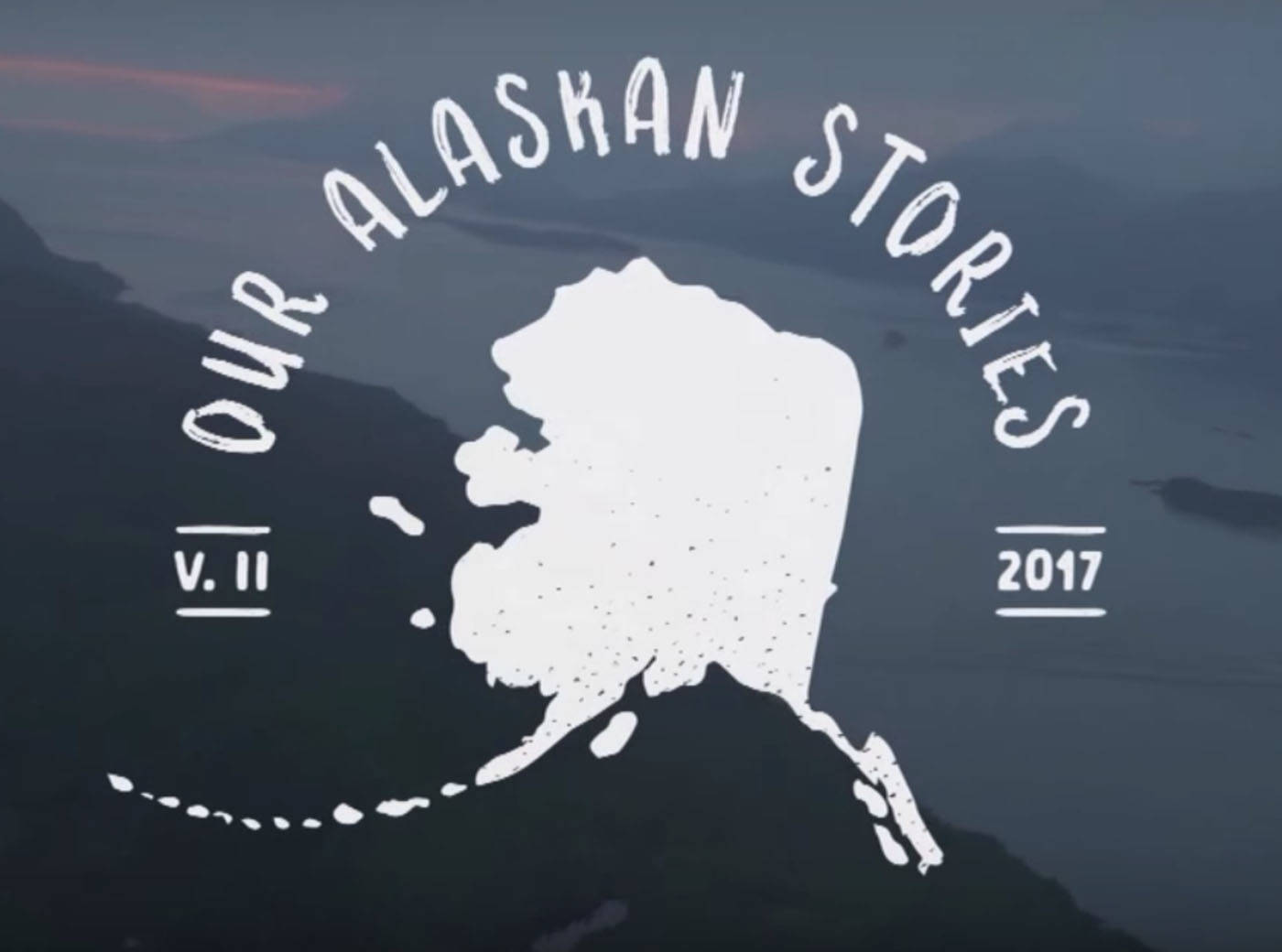A scene from the short film “For the Love of Salmon” flashes on the screen and the audience winces sympathetically. It’s the image of a family’s commercial fishing boat floundering offshore, submerged in water, with its net partially cut and debris swamping the decks. The sight is made all the more painful by the reason behind the vessel’s sinking.
“We ended up having the biggest sockeye run since the early 1990s. Boats would set up right next to each other, there were so many fish it didn’t even matter,” said Sierra Felts, a junior at Mount Edgecumbe High School, describing the start of the summer in Dillingham. But the boon turned to bane when an overly-full net dragged her family’s commercial fishing boat down.
Felts’ film, “For the Love of Salmon,” was one of five student-directed films in “Our Alaskan Stories,” the kickoff event for Sitka’s Wild Language Festival, which ran Nov. 16-19. The festival, put on by the Island Institute, celebrated the wild power of language and expression. Short films, writing workshops, poetry readings, and storytelling brought people together to share experiences of place, culture, and community.
The idea behind the festival, said Peter Bradley, executive director of the Island Institute, was to demonstrate the power of art and expression in expanding people’s vocabulary of what it means to be human. It’s about finding and sharing stories through multiple forms of media.
Preparation for “Our Alaskan Stories” began months ago under the guidance of local filmmakers Hannah Guggenheim, Paul Fitzgibbons and Lee House.
Felts and four other student filmmakers — Alyssa Afcan (Nunam Iqua), Michael Martin (Hoonah/Juneau), Chad Brown (Kongiganak) and Andrea Cook (Hydaburg) — brought cameras home over the summer to shoot footage. Come fall they found themselves immersed in the editing process, pouring over hours of material to choose what shots best represented home.
Through ocean spray and bloody fish processing, hushed panoramas of tundra, sparks from fire dissipating into the night, and rhythmic drumming and dance, the students captured scenes that spoke to who they are and where they come from.
“Alaska is culturally diverse and my culture is vast among west Alaska. I want to show everyone, even Alaskans, that we all have different stories and different ancestors. My film was my story,” said Felts.
When tragedy struck and her family’s boat sunk, the carefully-crafted storyline and well-planned shots seemed like a lost cause. But arriving back at school in the fall, conversations with Guggenheim and Bradley pushed Felts to consider other messages she could draw from her experience, things like her love of salmon and her connection with her father.
“I was surprised by my family the most during this summer,” Felts reflects. “Our boat sinks? Well, we’re all there to help. We need more fish in the freezer? It’s raining, but we’re ready to go.”
And even better? “The whole time my film was up there playing, even when people groaned when the boat sank, I was smiling. I loved sharing.”
The creative process, from idea to finished product, is what makes the “wild” in Wild Language Festival. Language can, of course, be seen as the opposite of wild: a practical tool used for communication and structured by syntax and grammar. But “wild” comes in to play in more experimental forms of expression such as poetry, music, film, and dance.
“These experimental forms of expression stretch the limits of normative language and expand our sense of possibility,” says Bradley.
The Wild Language Festival didn’t just showcase finished products, it also helped people find their own stories to share. Ernestine Hayes, Alaska State Writer Laureate for 2017-2018, led a writing workshop as part of the festival. Hayes is no stranger to digging deep into memories for inspiration. Her memoir “Blonde Indian” tells of her bittersweet return to her homeland in Juneau.
At the end of her workshop, Hayes posed a final assignment to the participants: draw a floorplan of a previous home. Quiet descended on the room as people mulled over their memories. After a few minutes of scratching and turning pages, the participants held their floorplans up to show the group.
The details spilled forth freely — the freezing cabin where a recovering addict shivered under a pile of blankets; the self-described “gothic horror” childhood that, despite hard times, was brightened by a spruce tree in the yard and an incredible view of Mount Verstovia (before a new house next door blocked the view); the family kitchen that became the battleground for a mother’s struggle with depression.
The release of memories was cathartic. Hayes smiled, her final point clear. Those memories, physical details brought to life by emotion and experience, are the root of each person’s story. If they’re is willing to reflect, they will find the images that tell their story.
Bradley has bigger ideas about what these stories can accomplish. He considers various guests and participants in the festival — Kristian Cordero, a Filipino poet, author, and filmmaker who writes in and translates between three languages of the Philippines; Ernestine Hayes, a member of the Tlingit Kagwaantaan clan; the student filmmakers from across Alaska; and local poets and storytellers including Blossom Twitchell, Louise Brady, Robert Davis Hoffmann, John Straley, and Carolyn Servid — and how their unique experiences of place, culture, and community come to light.
“It is important to bring perspectives that don’t necessarily match our own,” Bradley says. “Through wild language, we can gain more respect and patience for the unknown, the strange, the other, the wild.”
For more information on the Wild Language Festival visit iialaska.org. To see a YouTube trailer of the films, go to https://www.youtube.com/watch?time_continue=107&v=8xFc_cvmO7Q.
• Amelia Greenberg is a freelancer and AmeriCorps volunteer based in Sitka.

